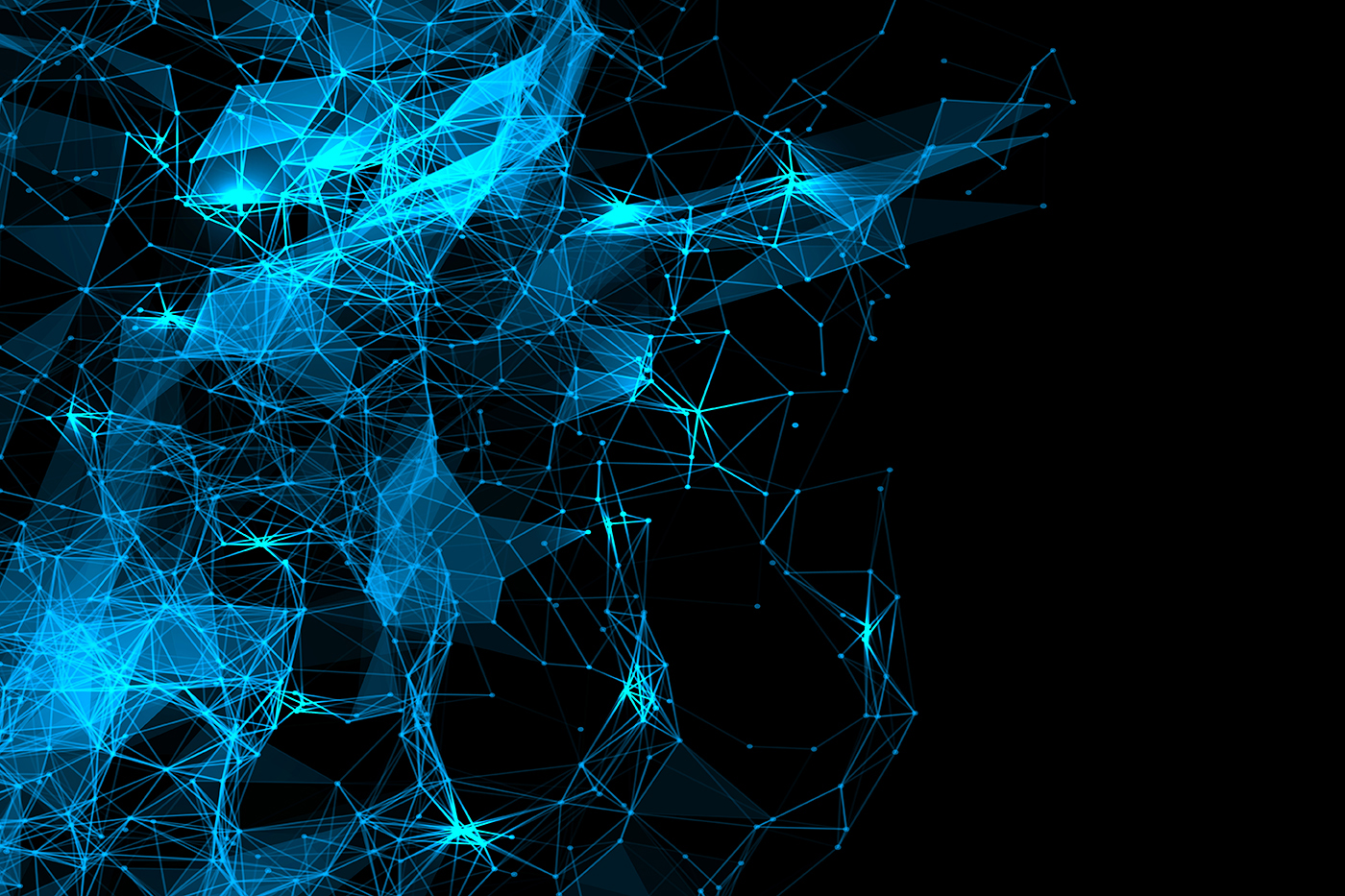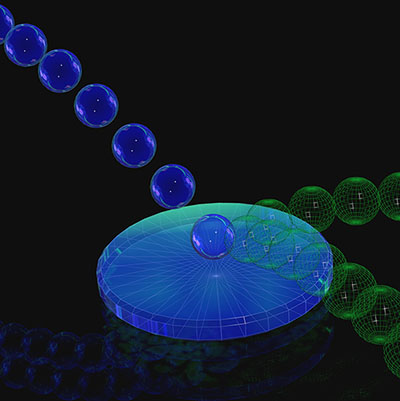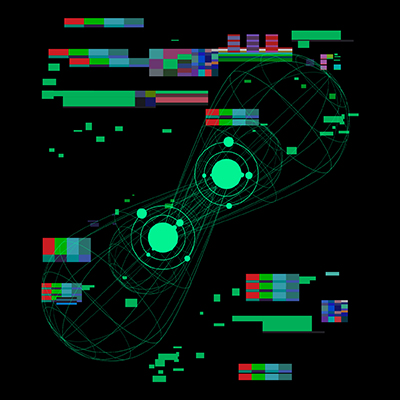Highlights
Machine learning technique could aid photonic crystal design
 In APL Photonics, CQT researchers report that a machine learning technique known as persistent homology, which characterises the ‘shape’ of datasets by connecting data points, is useful for modelling photonic crystals. Image: mikser45/Shutterstock.com
In APL Photonics, CQT researchers report that a machine learning technique known as persistent homology, which characterises the ‘shape’ of datasets by connecting data points, is useful for modelling photonic crystals. Image: mikser45/Shutterstock.com
Designers of photonic crystals might be able to better predict the properties of new light-controlling materials with an approach proposed by CQT Senior Research Fellow Daniel Leykam and Principal Investigator Dimitris Angelakis.
The researchers have shown that a technique from machine learning known as ‘persistent homology’ can help calculate how the nanostructured materials will transmit light.
That could make it easier to design man-made photonic crystals, fabricated for example with layers of materials, etched patterns or embedded structures, for specific applications.
Photonic crystals are used to control and shape light beams in devices such as lasers, sensors and solar cells. The material’s nanoscale structure determines what wavelengths of light can flow through it and in what directions the light can travel. A full description of the allowed modes of light is called the material’s band structure.
Finding the optimal band structure for a given application is challenging and may involve going through many candidate designs. That’s where the new approach can help. Daniel and Dimitris write in their paper: “The approach may be used to save many graduate student-hours, for example, if it is necessary to compute and check thousands of band structures to find an optimal lattice design subject to certain constraints.” The paper was published on 1 March 2021 in APL Photonics.
Explainable machine learning
A tool from the field of topological data analysis, persistent homology has been used in data science and medical science. It looks at data points over a range of scales to identify and characterise the ‘shape’ of the dataset.
Imagine the dataset presented in a scatter plot in two or more dimensions. The technique first connects all the data points that are within a certain distance, x, of each other. As distance x increases, more points are connected. The technique tracks how the shape mapped out by these connections changes and counts holes that appear in the dataset. Features that only appear for a small range of scales can be attributed to noise, while those that persist over a larger range of scales are meaningful.
“One of the nice thing about this technique is that it is ‘explainable’ machine learning. The results are interpretable and verifiable in the sense that we know why the algorithm gave a certain answer,” says Daniel, who is the first author of the paper and also a member of Dimitris’s group.
New features
Applied to photonic crystals, the researchers could use the technique to extrapolate from known or easy-to-calculate properties of the material – say, some allowed modes of light – to model the material’s band structure more completely. Daniel and Dimitris found they could predict features of the band structure that were not easy to calculate, such as whether the allowed propagating modes of light at a given wavelength are localised to a few specific directions or if they exhibit more complicated behaviour.
To test the method, they researchers considered the example of a quantum emitter embedded in a honeycomb-shaped photonic crystal. They showed that features identified by persistent homology could be used to optimise the radiation profile of the emitter.
“Daniel joined my group last summer to work in the intersection of topology, machine learning and quantum computing. This work is an excellent example of the possibilities in this area,” says Dimitris.
For Daniel, the study built on his past experience working on topological photonics, where topological ideas are applied to design photonic crystals. He says, “Here, I could use my previous expertise to answer the question about whether or not we can apply data science techniques to photonics.” The researchers are now exploring other applications of persistent homology to quantum systems.
Learn more
Related Stories
 | Quantum simulation explores all possible futures April 12 2019 |
 | Hybrid machine learning algorithm optimises engineering of quantum sensors August 28 2020 |
 | Doing quantum machine learning without going digital January 12 2021 |






